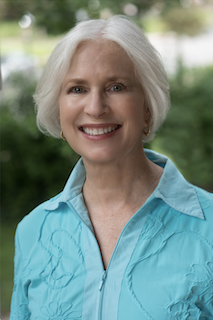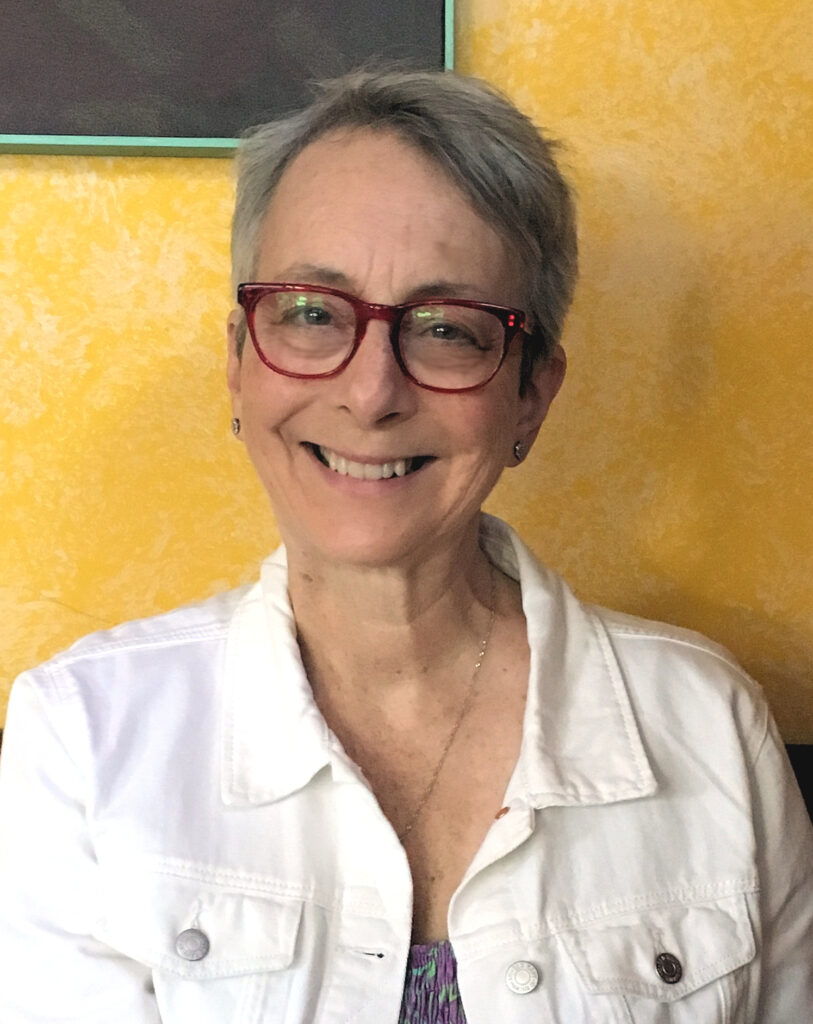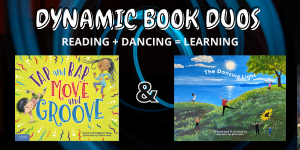
Please welcome author Connie Bergstein Dow and author/illustrator Karen Diaz Ensanian to Dynamic Book Duos – a blog featuring two books that pair together in a meaningful way along with educational activities to strengthen reading skills. This week’s pairing focuses on how the combination of reading and dancing enhances learning.
PERFECT PAIR: Reading + Dancing = Learning!
Connie and Karen have both had careers as dance educators. Both of their books were created knowing that moving is vital for learning and connecting with the world. Teachers and caregivers can use the ideas and prompts in both books and translate them to a rich variety of lively and playful creative dance activities for young children. Using picture books as catalysts for movement can help to reinforce early literacy skills, such as rhythm and rhyming patterns, vocabulary, and exploring characters and settings. Inherent in all creative movement activities is the nurturing of social-emotional skills, such as spatial awareness, self-expression, and setting and attaining goals.
Book 1: Tap and Rap, Move and Groove
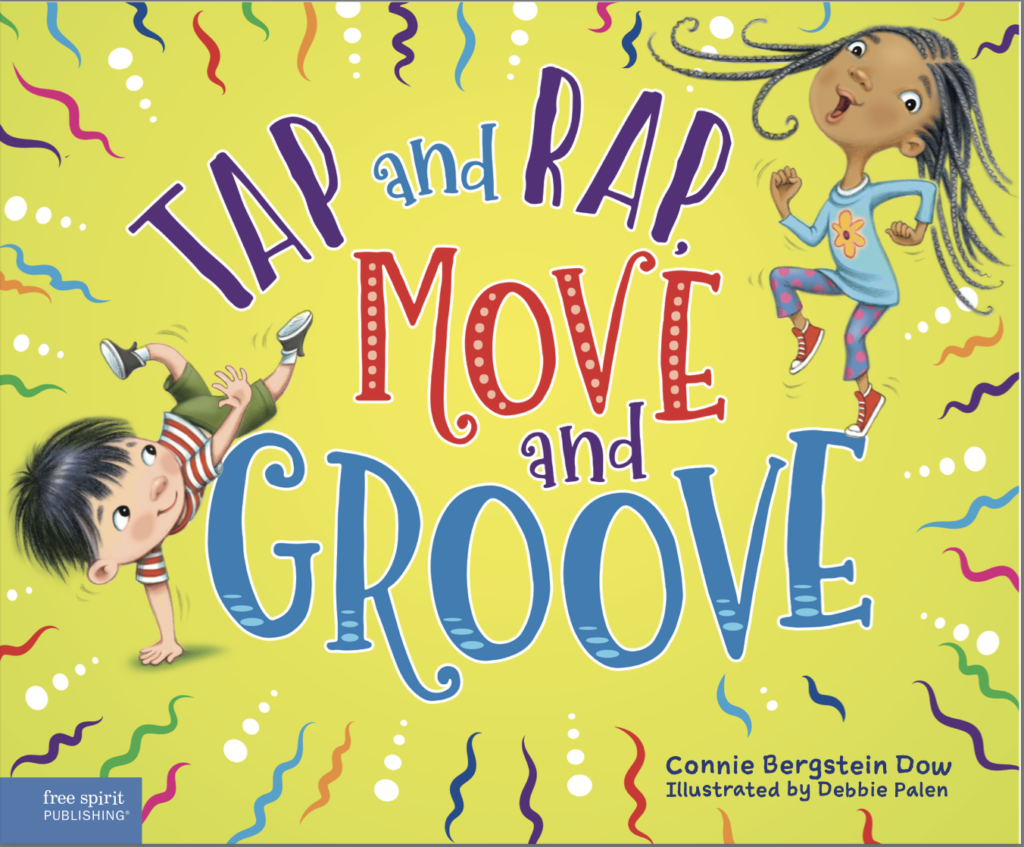
Do your little ones love to jump, hop, stretch, leap, tiptoe, twirl, and gallop? The new picture book TAP AND RAP, MOVE AND GROOVE provides everything you need for a creative dance activity, wrapped up in fourteen original rhythmic chants. The variety of playful activities inspire children’s imaginations, and reinforce important developmental skills such as body awareness and problem solving. Gorgeous illustrations by Debbie Palen.
Book 2: The Dancing Light
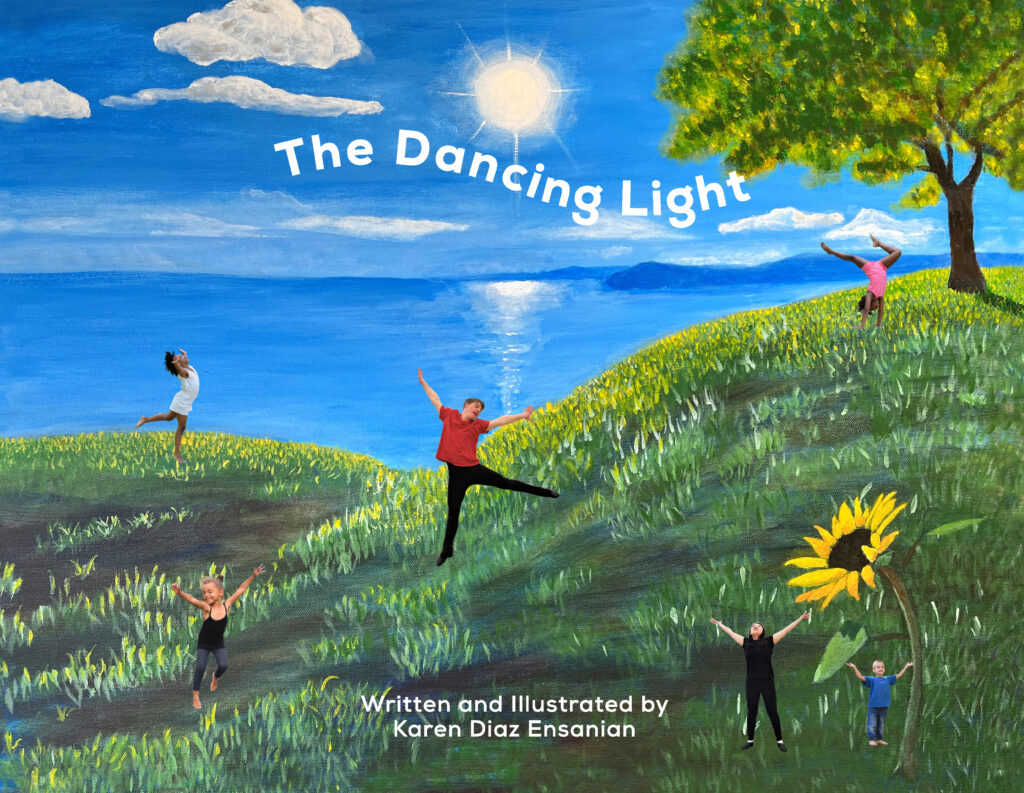
I can make a dance about anything and learn about the world and myself. How does light effect our world and our lives?
The Dancing Light is a lushly illustrated book of landscape paintings embedded with photos of young dancers demonstrating how light effects our world.
Students will develop their dance movements, guided by vocabulary, poetry, painted landscapes, and photographs of dancers. With the information and imagery, the students will gain a greater understanding of light, connect this understanding in their own bodies, and internalize a deep love of the world they live in. This is an opportunity to learn through movement. At the bottom of each page there is a question that sets the dancer on a quest to find their own way of moving and creating dance.
The journey of the book follows the path of light: light found in nature, light that is man-made, the way light moves through reflection and refraction, its importance for plant life, and finally what happens when light is blocked and falls into darkness.
EDUCATIONAL ACTIVITIES:
Activities for Tap and Rap, Move and Groove:
Activity #1 Expand the Fun of FREEZE DANCE to Make a SHAPE DANCE:
- Teach the children the first three lines of FREEZE DANCE (pp. 18-19), which are the same for each stanza. Have them say these lines with you. Then you call out the last line, and the children respond by freezing in the shape described.
- Repeat for all of the stanzas.
- After you have done the whole dance, tell the children they will now do a dance about the final shapes in each stanza. Call out only the last line in each verse. Ask the children to make the shapes in succession. You will start with “Freeze in a twisty, curly shape!” then, “Freeze in a wide and stretchy shape!” Continue until you have called out each shape and the children have made and held the shapes.
4. Try the SHAPE DANCE faster. A tambourine or drum beat can be used as you call out each shape. Do it one more time as fast as you can.
Now play a selection of lively music, and ask the children to dance freely, incorporating any and all of the shapes they made while they are moving. You can call out prompts like, “Can you make any of the shapes in the air? On the floor? While you are turning?”
To finish the dance, prompt them to freeze in their favorite shape.
Activity #2 Expand the Fun of GALLOP DOWN THE LINE:
This activity will help children practice the large motor skill of the sideways gallop (the chassé in ballet vocabulary).
- Do the GALLOP DOWN THE LINE (pp. 6 and 7) activity together. Ask the children to stand arms length apart, in two long lines facing each other. Call out the words of the four-line verse. On the third line, the two children at the front of the line will gallop down the center facing each other, and then join their places in line at the end. Children may hold hands while they gallop, or face each other with their arms out to the side.
2. Repeat the chant for each pair of children. Encourage the children to clap and chant with you while they are waiting their turns. Repeat the whole activity several times through.
3. In a large unobstructed space, practice the sideways gallop step. First have the children cross the floor one by one. Encourage them to do the movement with bent legs to take off, lift high into the air and try to straighten their legs, and land again with bent legs. Challenge them to cross the floor first in 10 chassés, then 8, then 5 (depending on how large the space is, of course), as they fulfill the range of motion of the chassé step.
Now ask them to do chassés with a partner again, as they did in the dance. Have them try holding their arms wide and slightly curved, creating a circle of space between them (but not holding hands). Make it fun by asking them to imagine they are holding something as they do the movement. This helps them maintain the space between them, and to keep their arms steady. “What are you and your partner holding? Can you keep it from falling as you chassé together all the way across the floor?” For seasonal ideas, they can imagine they are holding a pumpkin for fall, a snowball for winter, etc.
Do one last set of chassés, asking them to make silly faces at their partner as they travel across the floor.
Activities for The Dancing Light:
Activity #1 Create a Dance:
1.Decide on the theme of your dance such as elements in science, stories, art, poetry, music, units of study, etc.
2.Select a variety of action words and different ways to do them that help you illustrate your theme.
3.You can use different body parts, shapes, and qualities such as strength/lightness and quick/slow. You can add different feelings, pathways, directions, and levels. You can be in solos, partners, or groups and use music, words, and props.
4. Create a beginning and an ending. 5. Share your dance with others. Enjoy
Activitiy #2 Shadow Dancing:
Discuss and demonstrate how when light is blocked, it creates a shadow.
With students facing a wall, use a projector to shine light on them so they can see their whole body shapes in shadow on the wall.
Now give some directions about changing their shape as they continue to watch:
1. Can you make your body as big as you can? Now slowly melt and get smaller and smaller. Then rise and stand back up.
2. Can you make a side ways bending shape ? Can you make it pointy? Or Wiggly? Then on the other side?
3. Can you make a shadow shape connecting to someone else’s shadow without touching the other person?
4. Can you think of other ways to move your body to make shadows? Use levels, different body parts, different qualities, use lightness or strength, use different sizes, move very tightly or very loosely, etc.
5. Can you dance with music and make a dancing shadow using some of your new ideas?
6. Finally, can you make your own ending shadow shape?
Activities for Both Books:
Activity #1 Make a Dance Using a Poem:
1. Read the whole poem Earth Dance.
2.Choose one line that feels very interesting for the children and create a story with it.
Ex. “Birds nesting” half of the children are the parent birds and do the first part of this story and the other half wait because they will be involved later in the story as the baby birds.
3. Start to tell the story:
Ok birds, are you ready for the day ? We have to make our nests! Let’s fly through the air making sure we are very careful not to bump other birds and lets start to look for things to use to make our nest. Oh I see some twigs! Birds bring them back to the home spot. Oh there are some leaves, go get them.
They repeat bringing them back and this can go on for several items such as moss, feathers, weeds etc. Then assemble the nest all together and go to sleep. The reader tells the other children to quietly come into the nest and make a shape of an egg. When the parent birds wake up, the eggs are in the nest!
Slowly the baby birds crack out of their shells. The story continues as the parent birds go out to get food and feed the babies and teach them to fly. Follow me!!
4.Then have the groups switch and repeat the story.
5. At the very end they all together make a happy bird dance with music.
Activity #2 A Movement Exploration for Raindrops Plopping:
Let’s make a raindrop dance. First let’s make a list of every word we can think of for rain and if it is raining direct everyone to the window to observe.
Examples of Words to Use: Rrin, plopping, sprinkle, pounding, dripping, and you can come up with silly words too like plinkity plink.
After making your list ask the dancers to stand up and start moving with your words.
Can you plop walking in a straight line? Can you plop in a curvy path? Can you plop with just one arm and hand? Can you plop with your toes? Can you plop with your elbows? Can you plop very slowly and then very fast? Can you plop going around in a circle?
Then try this movement exploration with the other words.
At the end: Class is almost over so let’s make a raindrop goodbye dance using your new ideas!
(This activity can also be done with snowflakes.)
MEET THE AUTHORS:
